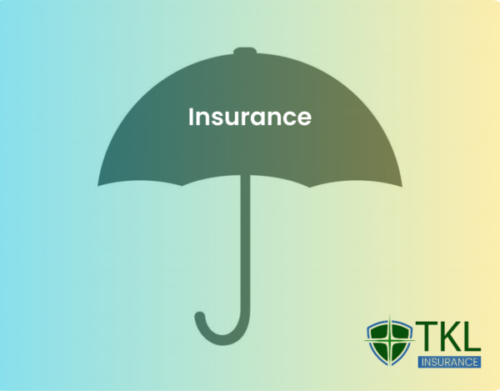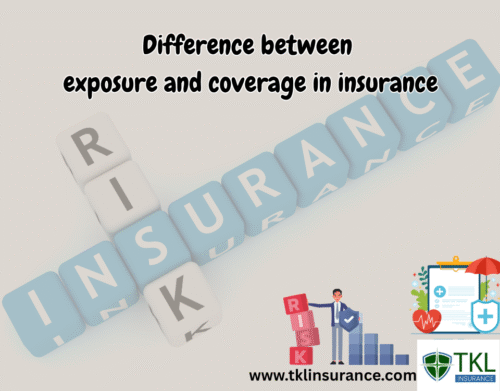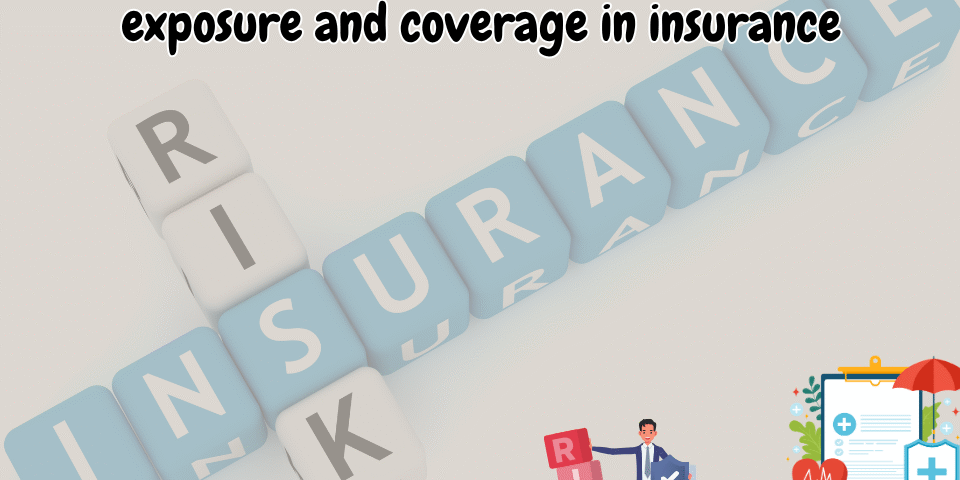Difference between exposure and coverage in insurance

Is Car insurance and Auto insurance the same?
July 25, 2023
How Much is the cost of Car Insurance in California
July 27, 2023Table of Contents
ToggleDifference between exposure and coverage in insurance
The difference between exposure and coverage in insurance is that exposure is the risks causing a loss will occur, while coverage is the protection that an insurance policy provides against that loss.
Exposure is the potential for a loss to occur. It is the risk that an insured party faces. Coverage is the protection that an insurance policy provides against a loss. It is the set of risks that are covered by the policy. In the world of insurance, there are two important things to understand: “exposure” and “coverage.”
Difference Between Exposure and Coverage in Insurance
The difference between exposure and coverage in insurance lies in risk vs. protection.
-
Exposure refers to the possibility of a loss happening.
-
Coverage refers to the protection your insurance provides if that loss occurs.
These two concepts are critical to understanding how insurance works. Let’s break it down with clea
Here is an example to help illustrate the difference between exposure and coverage:
- Exposure: You own a home in a flood-prone area. This means that you have exposure to the risk of flooding.
- Coverage: You have homeowners insurance that covers you for the cost of repairs if your home is flooded. This means that you have coverage against the risk of flooding.
In this example, your exposure to flooding is the risk that your home will be flooded. Your coverage against flooding is the protection that your homeowner’s insurance provides if your home is flooded.

What is Exposure:
Exposure is the potential for a loss to occur. It is the risk that an insured party faces. It represents the likelihood of a financial loss. The higher the exposure, the higher the premium. For example, if you have a car, you have exposure to the risk of an accident. The greater your exposure, the higher your insurance premiums will be.
“Exposure” simply means the level of risk an insurance company takes on when they agree to provide insurance for a particular situation or property. It’s like gauging how much potential financial loss they could face if something goes wrong. For example, if an insurance company offers coverage for homes in an area prone to natural disasters, like hurricanes or floods, their risk exposure is higher because they might have to pay out more claims.
Examples of exposure:
-
Owning a car → exposure to accidents
-
Living in a flood zone → exposure to flood damage
-
Running a business → exposure to lawsuits
For instance, if you drive daily in a high-traffic area, your exposure to accidents is high, meaning the insurer takes on more risk by covering you.
What is Coverage:
Coverage is the protection that an insurance policy provides against a loss. It is the set of risks that are covered by the policy. For example, your car insurance policy may cover you for the cost of repairs if you are in an accident.
Examples of coverage:
-
Car insurance covering accidents and theft
-
Home insurance covering fire or water damage
-
Health insurance covering medical expenses
Now, “coverage” is what you get as the policyholder. It’s the actual protection and benefits that the insurance company promises to provide you in case of certain events or risks. For instance, if you have car insurance, your coverage might include things like getting your car repaired after an accident or replacing it if it gets stolen. Similarly, if you have health insurance, your coverage would take care of medical expenses when you’re sick or injured.
So, in a nutshell, “exposure” is about how much risk the insurance company is willing to handle, while “coverage” is all about the protection and support you’ll receive if something unfortunate happens to you or your belongings.
Exposure meaning in insurance:
In insurance, exposure refers to the potential for a loss to occur. It is the risk that an insured party faces. For example, if you have a car, you have exposure to the risk of an accident. The greater your exposure, the higher your insurance premiums will be.
Here are some examples of exposure in insurance:
- The risk of a fire occurring in your home.
- The risk of a car accident happening.
- The risk of a business being sued.
- The risk of a natural disaster occurring.
The amount of exposure that an insured party faces can vary depending on several factors, including the type of insurance policy, the location of the property or business, and the insured party’s activities.
Insurance companies use exposure to calculate insurance premiums. The higher the exposure, the higher the premium will be. This is because insurance companies need to charge enough to cover the cost of potential claims.
Here is an example of how exposure is used to calculate insurance premiums:
Suppose you have a car insurance policy, the insurance company will use your exposure to calculate your premium. If you live in a city with a high traffic accident rate, your exposure will be higher than in a rural area with a low traffic accident rate, as a result, your premium will be higher.
Coverage meaning in insurance:
In insurance, “coverage” refers to the specific protection and benefits provided by an insurance policy. It outlines what risks and events the insurance company will financially compensate you for if they occur during the policy period. In simpler terms, coverage is the extent to which an insurance policy shields you from potential financial losses or liabilities.
For example, if you have car insurance coverage, it might include protection against damages to your car in an accident, medical expenses for injuries sustained in the accident, and even coverage for third-party property damage or bodily injuries you might cause to others.
The coverage provided by an insurance policy is typically outlined in the policy documents, and it’s essential to review and understand the coverage limits and exclusions to know precisely what protections you have in different situations.
Example: Difference Between Exposure and Coverage in Insurance
Let’s see the difference between exposure and coverage in insurance with example:
-
Exposure: You live in a hurricane-prone state. Your risk of storm damage is high.
-
Coverage: You have homeowners insurance that includes hurricane protection.
So, your exposure is the risk of a hurricane, and your coverage is the financial support your insurance gives if one hits.
Is car insurance and auto insurance the same exposure limit?
No, car insurance and auto insurance do not have the same exposure limit.
Exposure refers to the maximum amount of money that an insurance company will pay out in a claim. The exposure limit for car insurance and auto insurance is typically set by the insurance company, and it can vary depending on the type of coverage and the policy limits.
In general, the exposure limit for car insurance is lower than the exposure limit for auto insurance. This is because car insurance typically only covers liability, while auto insurance can cover both liability and physical damage.
What is the difference between exposure and premium?
In insurance, there are two important terms: “exposure” and “premium.” These terms are sometimes confusing, but they have different meanings.
Exposure refers to the possibility of experiencing a loss. It’s like the level of risk you face as an insured party. For example, if you own a car, you have exposure to the risk of getting into an accident. The more likely an accident might happen, the higher your exposure becomes. And when your exposure to risk increases, insurance companies usually charge higher insurance premiums.
On the other hand, the premium is the amount of money you pay to an insurance company for your coverage. It’s like the cost you incur to protect yourself against potential losses. The premium you pay is determined based on various factors, such as your exposure level, the type of insurance policy you have, and your circumstances.
So, the main difference between exposure and premium is this: exposure is all about the risk of facing a loss, while premium is the cost you pay for being protected against that potential loss.
Exposure vs. Premium
Your exposure (risk level) is one of the biggest factors that determines your premium (the amount you pay for insurance).
More exposure = higher risk = higher premium
Less exposure = lower risk = lower premium
What are the two types of exposure?
There are two main types of exposure: external exposure and internal exposure.
External exposure occurs when you come into contact with a harmful substance from the outside. For example, think of exposure to radiation during a nuclear accident or getting in contact with chemicals leaking from an industrial site.
On the other hand, internal exposure happens when a harmful substance enters your body. For instance, you might accidentally ingest lead by eating paint chips that contain lead, or you could consume fish with high levels of mercury, which leads to mercury exposure.
Conclusion:
Understanding the difference between exposure and coverage in insurance helps you make smarter decisions when choosing policies. Know your risks, evaluate your needs, and ensure your coverage matches your exposure.

FAQ:
Is car insurance and auto insurance the same exposure limit?
No. Auto insurance may include commercial vehicles, while car insurance typically covers personal use. So exposure limits can differ depending on usage, location, and policy type.
What’s the difference between exposure and premium?
-
Exposure = risk of loss
-
Premium = cost of protection
Higher exposure usually means a higher premium.
What are the two types of exposure?
-
External exposure: Risk from outside sources (like natural disasters)
-
Internal exposure: Risk from internal sources (like liability from operations)




